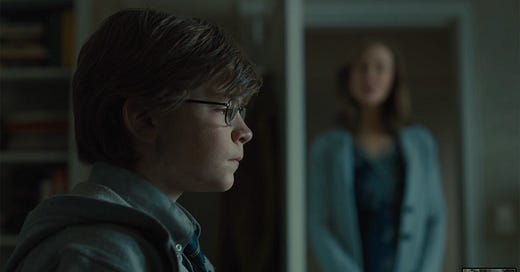Week 52 saw posts on The Marvelous Mrs. Maisel (2017-2023), Brooklyn 99 (2013-2021), The Goldfinch (2019), Diary of an Uber Driver (2019) and Romeo Must Die (2000).
The Marvelous Mrs. Maisel
This show-within-a-show from The Marvelous Mrs Maisel 4.08 "How Do You Get to Carnegie Hall?" has live colour changes as magnificent and choreographed as its camera work; the more you watch, the more details really pop.
Brooklyn 99
Hopefully your holidays weren't as bad as Jake and Amy's!
The #Brooklyn99' double entendre 'cutting the turkey' is sold with the framing, cutting Roger and Victor off at the waist so we can just see their hands moving furiously, and in wider shots juuuuust see the turkeys teasing the edge of frame.
This framing also sets up the punchline, but we're so distracted by all the other cuts amidst the turk-ing-off, we don't notice until there's a missing thumb.
The Goldfinch
A video demonstrating one particular technique that editor Kelley Dixon talked about on Team Deakins podcast.
Diary of an Uber Driver
Diary of an Uber Driver has necessarily limited main 'location' - so when Ben and Julie stop for a roadside meal and chat, director Matthew Moore (Bump, Colin from Accounts, The Great) takes the chance for some unusual car framing; still putting up frames and barriers with car windows and doors, but in unusual ways.
Note fun details such as Julie tucking her napkin in the shoulder-seatbelt and phone in the door-handle. The background behind Julie is bustling and loud while the background behind Ben is staid and quiet; it creates great juxtaposition as well as giving us something about each of their states of mind in the moment.
Romeo Must Die
Kicking off the New Year with the first (of many) transition-and-establishing shots from Romeo Must Die, which has a series of dialogue-less "characters find out about death" scenes.
This sequence goes from body discovery to mid-level goon being told to Big Boss getting the message.
0:00-0:32 The transition from the night before kicks off, which is important because 1. juxtaposition of car / bike and gang member / paperboy is funny 2. late night to early early morning cues 'day after' without title cards. Note the camera movement continues through the cut, visually easing transition.
0:32-0:41 The moving shot follows newspaper boy into a skid, and continues upwards to what he's been shocked by; a dead body strung to a telephone pole. The cut-in of the body is from a low angle (his POV), and the reverse zooms in from a nice complimentary high angle.
0:40-0:52 The switch from a closeup to end one scene to a wide establishing the next scene is something Romeo Must Die does several times (it also likes to move from a BIG WIDE to end a scene to an ECU starting the next).
The camera sweeps across as the henchman runs to show the grandeur of the grounds; it's not just telling us 'this is urgent news' with the man running, but showing how opulent the house and thus owner is; Romeo Must Die consistently uses establishing shots as worldbuilding.
0:52-1:14 the henchman comes into the house; again the camera is wide and moving to show opulence, but it's also distinctly looking DOWN on the henchman, and UP at Kai descending the stairs, showing who is really important here.
1:15-1:23 This scene transition also goes from closeup (Kai) to wide (garden). It starts with Kai shadowed in the background (less important), Ch'u foregrounded and brightly lit (more important).
The crucial 'news is told' shot sees only Kai's shoulder; Chu'u is the focus.








